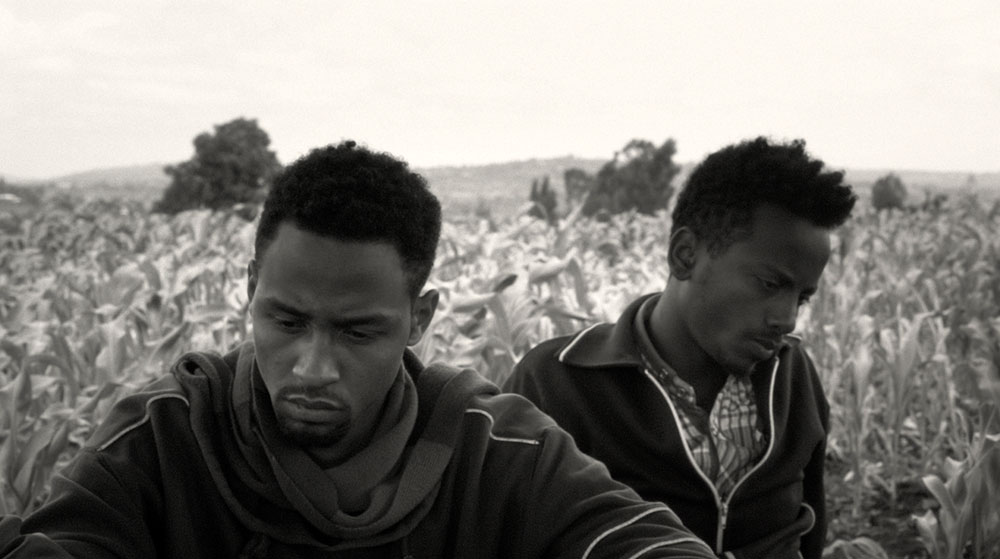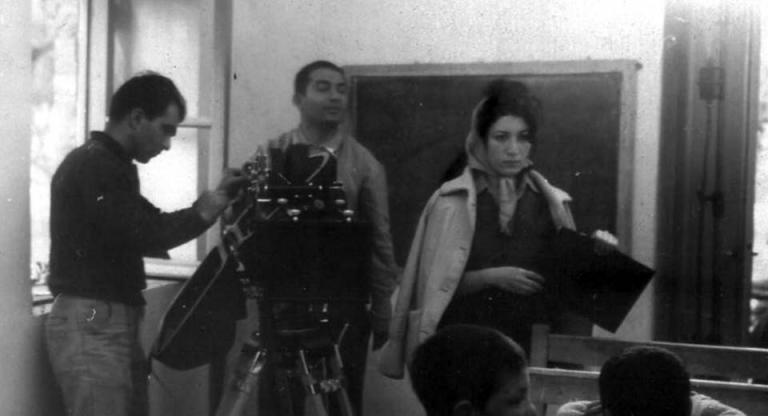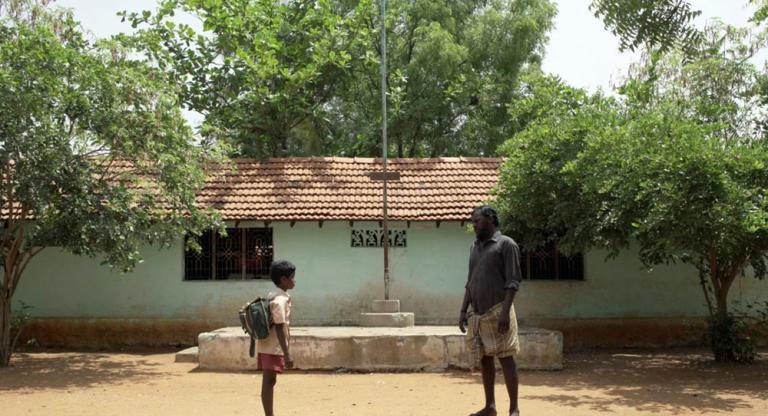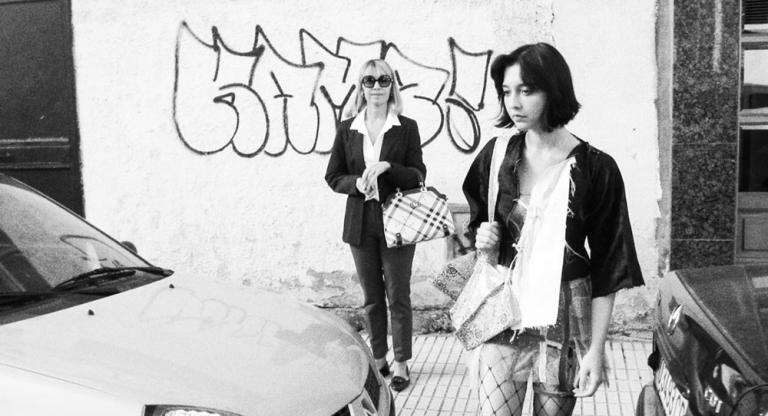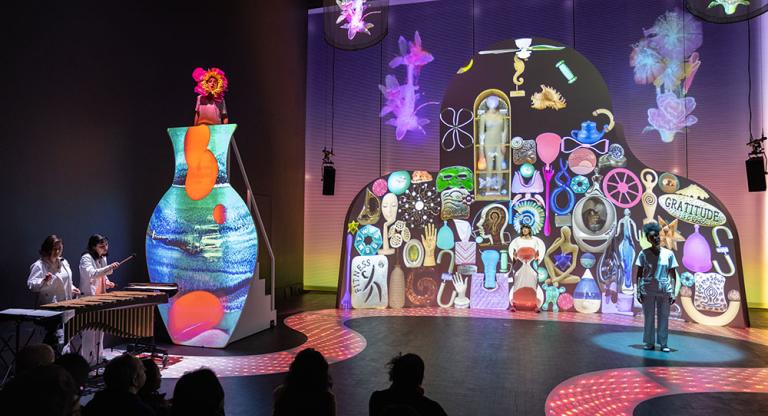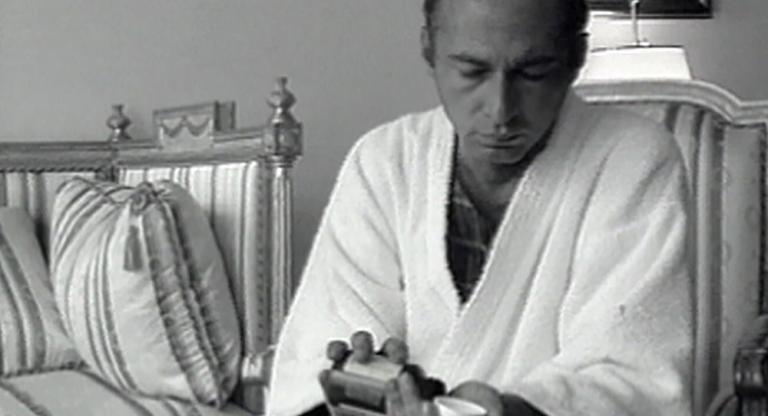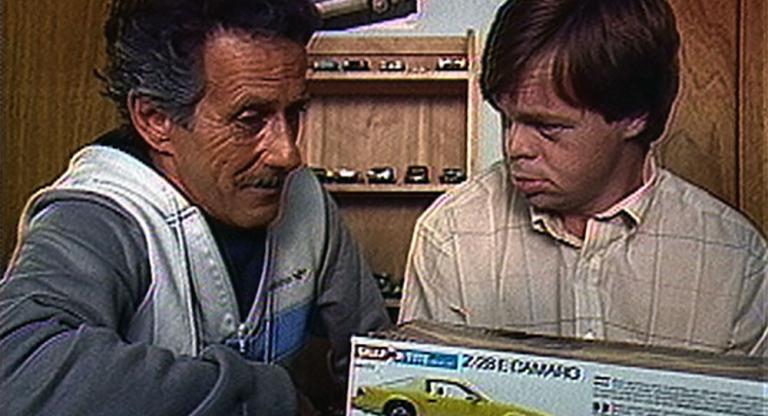Filmmaker Jessica Beshir will be in attendance this evening at the Maysles Documentary Center’s screening of her feature debut Faya Dayi. This gorgeous song of a film captures the idyllic rhythms and economic anxieties of Ethiopian communities whose economic and social lives revolve around khat, a native plant chewed for its stimulant effects. Through mesmerizing imagery, recitations of folklore, and intimate interviews, Beshir captures a mystical existence nonetheless beset by the material realities of climate change and economic crisis.
This conversation has been edited and condensed.
Patrick Dahl: I wanted to ask first about your subjects, the people whose lives you’re documenting. How much familiarity did you have with them before the project, and how did you establish rapport?
Jessica Beshir: Some I knew from before, some I reconnected with when I went back home [to Ethiopia]. I still have a lot of friends that live there. We grew up together. Some studied abroad and returned, some never left. There were also grandmothers and aunts, a whole community I went back to, to begin with. Through them, and through spending time there, and asking all of the questions I was having, I ended up slowly meeting a lot of the people that you see in the film.
The first time I went to the farm was after I was sitting in my friend’s cafe, and there was this farmer who brought her the mangos. He was the first one to take me to the farms.
Did it instantly click that this was a subject for the film? Or did that take a long time?
The first time I went, I felt the shock of being gone for so many years. Almost a decade. But I started to see what was happening with khat. I didn’t see any coffee anymore. What happened to our lake? Haramaya was that one lake that we all went to— when people got married, or when there was a holiday weekend your parents would take you. As soon as I arrived, it was a visceral shock. Just the topography alone.
I grew up with khat around me, it was never this anomaly. My grandmother has this little garden of khat. It’s just part of [life]. But when I went back, khat had almost become the job of the people I knew before. Before, it was like you would work in the morning, go home and eat, and then, like some people have a siesta in Europe, you chew khat and socialize, and then you go back to work. But now, so much has been happening, socially and politically, including high unemployment. So these youths would wake up in the morning and try to get a gig and do whatever, but by noon they haven’t found anything and they’re looking for khat. These are the things that I was finding. So spending time with the farmers—in the beginning I was just shooting interviews, because I needed to learn. I needed to understand. I needed to listen to see what was going on.
And then when I went back for the second time, I thought that this could be something. I would love to do a documentary about this. I already had the first footage of the farm, which is what you see in the film. That’s when I started to ideate that I might be starting something. But did I know it would take this shape or this form or this or that? No, that was something that came with time.
At the outset, what I was doing was truly research. I was interviewing many people from the farms. Dr. Ahmed Abdulatif, who is the head of the khat department at Haramaya University, grew up, like his great-great-great-grandparents did, on khat farms. But they also had corn and coffee and teff and other things. He explained to me that over time, all of those other crops became non-sustainable because of climate change.
But then, after a lot of teachings I was getting from locals, as well as from Sufi practices, the project was no longer about some crop. It was about life.
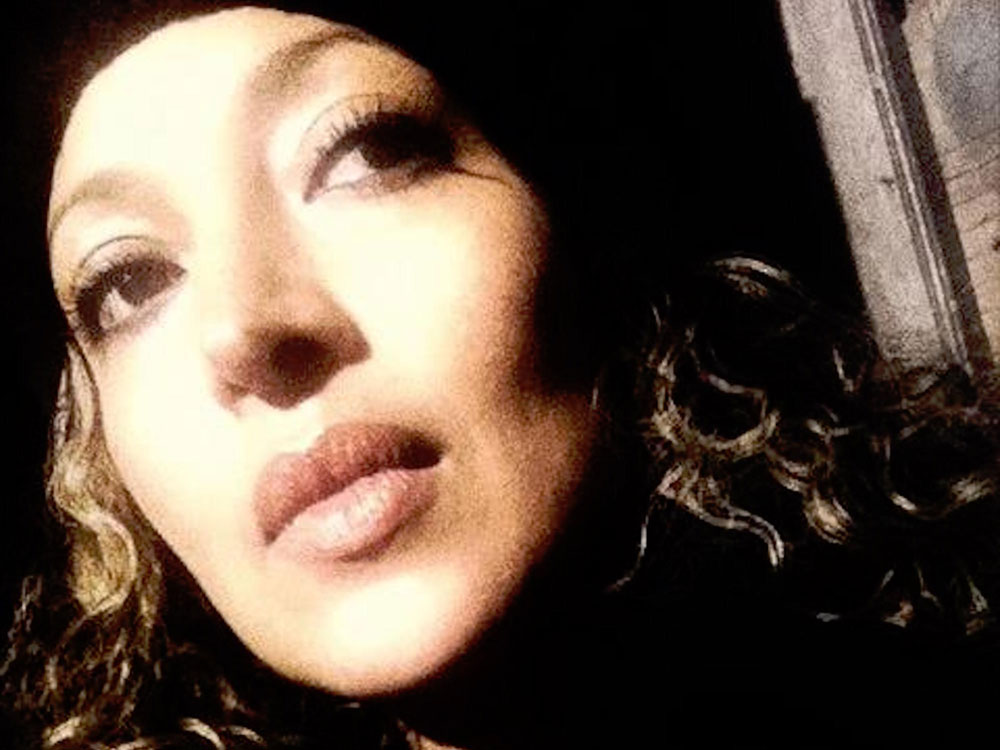
So is it safe to say that in the early stages it was a more “traditional documentary”? More, for lack of a better word, informative?
Yeah. I have so many interviews. Whoever wanted to talk, I said let’s talk. And everyone wanted to talk. But I was thinking those interviews are for me. Those are for me to understand what I’m trying to do and understand how I’m going to bring these ideas and life experiences, that I’m experiencing alongside my subjects, into an image, into a form. How can I use these sounds? So that came with time, and with their teaching also.
So many nonfiction films get trapped in the business of explanations and conclusions. You’ve found this wonderful realm where of-the-moment material contexts are all there—climate, refugees, economics—but the film still has a musical feel that is dominant. Audiences aren’t getting lost in information. I left the film more curious than I started, which is the opposite effect of most documentaries.
One of the things for me was if I can Google it, it doesn’t belong in my film.
[Both laugh]
I call it the “Wikipedia Test”
You know what I’m saying?! Even when we were editing, that’s one of the things we would joke about. If there’s information that’s Google-able, then I have better things to do here. Because it wasn’t about that information. It was about the state of being. I was trying to create a world that could transmit a certain state of being. So I didn’t need all of that information in the film. I needed to soak the information so that I could then go in and completely trust my instinct and intuition. I would be guided, but I’d be informed.
Again, I want to use the word “transmit.” It was about transmitting energies. It was almost like a prayer. When you pray, there is a certain state. I wanted the film to be in that state.
I felt very soothed and calmed during the film, but also full and curious. It was a very novel experience. I saw you mention The House is Black in another interview—
You know, The House is Black is an experience. Let’s talk about music, for example. Wherever you are in your daily life, there is a piece of music that calls you. You don’t just turn on the radio. There is something that you want to go to. Because you are responding to your state, where you’re at. At certain times you feel like listening to this or listening to that. The House is Black for me, is one of those that I want to go to. That’s it.
Nourishment.
Nourishment! Seriously, it’s nourishment for the soul. I feel that way about Tarkovsky. It just kind of hugs my soul. And when I need it, I go there.
Do you have a favorite Tarkovsky?
Mirror. I love Andrei Rublev. Can’t say enough about Stalker.
I hope this isn’t a rude question, but was any part of the film scripted? Or did you work with your subjects on their dialogue? Their words have such beautiful poetry. I don’t want to fall into the trap of thinking farmers can’t have poetic spirits, but I was wondering if there was a give and take between you and your subjects.
That’s not rude at all. I’ll tell you. In Ethiopia we have about eighty culture groups, ethnic language groups, altogether. You can drive for like four hours and you’ll be in a completely different culture with a different language where they wear different garments. I only speak Amhari, because that’s what they teach you in school. It’s the official language. So my father is Oromo, but I never learned the language. The two languages centered in the film are Oromo, which is the language of my father and the farmers, and Harari, which is spoken by the people in the walled city. I don’t speak either. But it was so important for me to center those two languages in the film because the sound, the cadence and the weight of expression are all singular.
Once I was filming Hashim Abdi, who recites the poem in the film. We were sitting and chatting and he’s chewing and doing his thing, and then all of a sudden, it was like his offering: he started to say these things, and I don’t understand any of it. Later on, I hired a friend of ours, a retired local who speaks all of the languages, to translate Hashim Abdi’s exact expressions into Amhari and then I would translate from Amhari to English. During filming, the subjects would translate for me the gist of what they were saying, but I didn’t know the exact words. I was feeling it. When you are sitting with the person you can feel it. I was so receptive to what they were offering to me, which was so intense and generous.
So later on during editing when I received the exact translations, they were like love letters. This is what Hashim Abdi was saying, and how he was saying it.
That sounds magical.
It was magical. Let me tell you, the day I received the translation of Hashim Abdi, I cried. Oh my gosh Hashim, you are so beautiful.
Was it hard to stop editing the film? It was such a long gestation. Was it hard to say that it was done?
Yes it was hard because when I applied to Sundance it was a work in progress. We didn’t even have a final cut. When they accepted the film, it was like a marathon. Once they accept a film it’s like now, now, now. But the thing is we now had a deadline. So the deadline decided it. Thank god. We had so many stories. We had to cut down everyone. Ultimately, I feel we gave it our all.
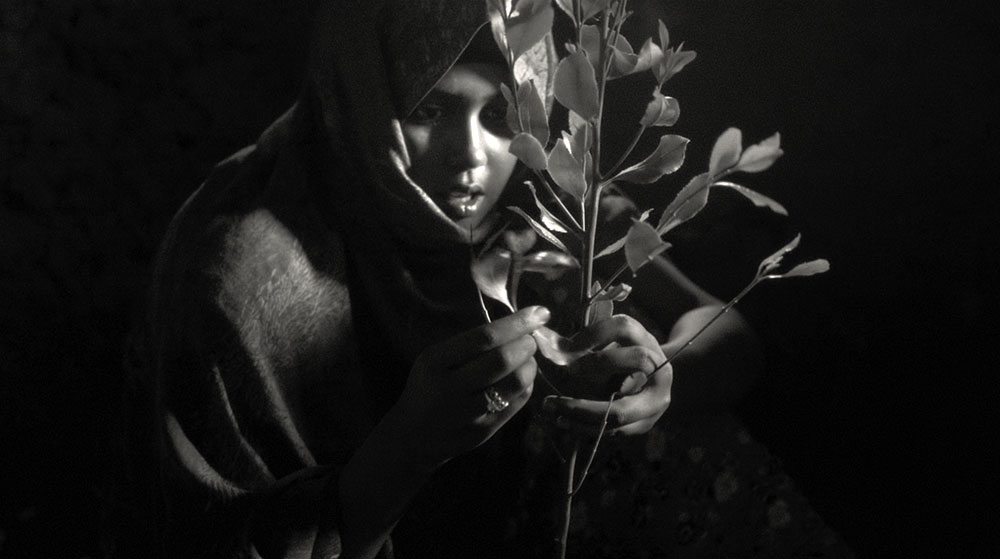
You shot Faya Dayi yourself. These are gallery-ready frames across the film. How big was your crew?
There was no crew. Until 2018 I couldn’t hire anybody. Even up to 2016 I thought I was shooting in order to get a grant and then maybe find a producer and a DP to hire.
I’m so glad that didn’t happen.
In 2016 we cut a small short called Hairat because I didn’t know anyone in the industry and someone said “make a short film out of the long film and see what happens.” Once I saw that film edited, I started to think perhaps I am that cinematographer I’m looking for. Perhaps I am that producer. It was no longer okay, let me do this so I can find someone, it was let me do this so I can finish. So it became a resolve by that time. I wasn’t thinking of myself as the person. But with that realization also came a lot of introspection, because then I had to go in there and think my god, why did you think that you were not good enough? There was a lot of that.
I realized that I had surrounded myself with people who weren’t believing in me and the project at all. Then came a time of introspection and growth and understanding of how those things work: clean the house inside so I could finally truly step into what I’m really believing and allow myself to be guided by my intuition. There was a lot of work that I had to do inside to finally say you know what, I’m doing it.
That’s an astounding anecdote. I would have thought you were trained as a photographer and had always intended to shoot it yourself. It’s ravishingly beautiful.
I appreciate that. This film sent me into a trip of learning and self-nourishment. I needed to get to know the camera. I had one 50mm lens. It was a beautiful liberating moment when I thought it doesn’t matter what lens I don’t have, it doesn’t matter what equipment I don’t have. What matters is what I do have. There’s no producer coming, there’s no cinematographer coming, there’s no one coming. So you just have to go for it. And it was exhilarating. I had to learn A-Z, 24/7.
